Some of the most Frequently Asked Questions (FAQ´s) we get from students that are interested in going to South America to study Spanish:
1. Why should I travel to Cusco?
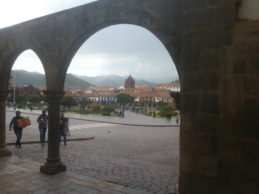 This question is very easy to answer. The city of Cusco offers a variety of experiences in one destination. Cusco has a diversity of tourist services, many types of accommodations such as hotels, hostels as well as travel agents, adventure sports, restaurants, crafts, shopping, bars and a very lively nightlife.
This question is very easy to answer. The city of Cusco offers a variety of experiences in one destination. Cusco has a diversity of tourist services, many types of accommodations such as hotels, hostels as well as travel agents, adventure sports, restaurants, crafts, shopping, bars and a very lively nightlife.
Some of the most popular treks from Cusco are the famous “Inca Trail” to Machu Picchu, Salkantay and Choquequirao. The most famous destination in the region of Cusco is one of the Seven Wonders of the World: Machu Picchu.
2. Where is Cusco located?
Cusco is a city located in southern Peru, at 3300 meters (10,826 feet) to 3400 meters high. The climate is warm during the day but cold at night. Known as the archaeological capital of America, Cusco has a population of around 430,000 inhabitants. It is also the tourist capital of South America. Cusco is a beautiful city full of contrasts between indigenous styles and style of the modern Western world.
3. I do not speak Spanish yet, is it a problem to travel?
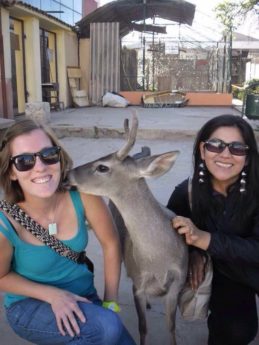 Cusco is a touristic city. If you are planning to spend time in Cusco as a tourist, then it won´t be a problem to get around if you speak some English. In the touristic places in Peru, you get a long way with English. But if you are going off the beaten track, Spanish will become a necessity.
Cusco is a touristic city. If you are planning to spend time in Cusco as a tourist, then it won´t be a problem to get around if you speak some English. In the touristic places in Peru, you get a long way with English. But if you are going off the beaten track, Spanish will become a necessity.
Also if you are in Peru for non-touristic reasons like to do volunteer work or an internship, Spanish is very necessary, no question about that. You won´t be able to communicate with the local people if you don´t speak Spanish. Only people that work in tourism have a decent English level. So if you want to know more about Peru, the people and the Peruvian culture… taking a Spanish course in Peru is the best thing you can do! And as Spanish is spoken in so many countries, you will definitely benefit from this in the future as well!
4. Do I need a visa to go to Peru?
You do not need a visa if you come from North America or South America, Western Europe or citizens of Australia, New Zealand or South Africa. Check at your embassy if you are coming from another part of the world. The tourist visa allows up to a maximum of 183 days in Peru. It is a good idea to make a copy of your passport before arriving in Peru.
5. What kind of credit cards are accepted in Cusco?
The cards that are accepted are Visa, MasterCard, American Express and Diners Club. Usually there is a fee on transactions with credit cards. Traveler’s checks are not too common, but accepted with a 4-5% commission. Credit cards are not commonly accepted in small communities or villages, so have some cash on you. If you are bringing US Dollars, remember not to bring dollars bills that are damaged or broken as they are not accepted in Peru.
6. What is the currency in Peru?
The “Sol” (sun) is the official currency of Peru, but the US Dollar is widely accepted as well. You can change money (cash in dollars or traveler’s checks) in banks or in any “Exchange House” most of them located near the “Plaza de Armas”. There are many ATM´s as well, so you do not really need to bring any cash from your home country.
7. What kind of clothes should I bring?
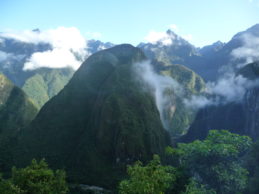 Remember, Cusco is located at 3300 m (11000 feet) to 3400 meters high in the Andes mountains. We recommend carrying light jackets and some layers of clothes. Wear light jackets when you feel cold and also make sure that they are waterproof (in rainy season: December to February). You can use some summer clothes during the day, but in the city of Cusco after sunset it gets cold.
Remember, Cusco is located at 3300 m (11000 feet) to 3400 meters high in the Andes mountains. We recommend carrying light jackets and some layers of clothes. Wear light jackets when you feel cold and also make sure that they are waterproof (in rainy season: December to February). You can use some summer clothes during the day, but in the city of Cusco after sunset it gets cold.
8. Do I need vaccinations and travel insurance when I travel to Peru?
Always take a health insurance before traveling. Although medical care is relatively cheap in Peru, it is always advisable to have travel insurance for Peru. Check the current practice in cases of yellow fever in the countries you are visiting, also of Hepatitis B, Hepatitis infections, typhoid, polio and tetanus. The rabies vaccine should be considered especially when staying in remote areas.
9. Will I get altitude sickness in Cusco?
As Cusco is at 3300 m (11 000 feats) to 3400 meters above sea level, the possibility of having side effects with respect to the altitude is there. Some effects can be heart pounding, difficulty breathing, headaches and fatigue. Most people feel the altitude a little bit, without having problems with it. To acclimatize the best is to rest a few hours after landing or arriving in the city of Cusco. Walk slowly, no physical exertion and drink plenty of fluids. If you plan to hike the Inca Trail or Salkantay, we recommend being at least four days in the city before starting your trail.
10. Is it safe to drink the water?
Try to drink bottled water when in Peru. Tap water is unsafe. You must always boil tap water first. After boiling the water, it is safe to drink and you can store it and drink it later as well. One observation in relation to Peru is the lack of toilet paper in almost all public places. Major hotels and restaurants have toilet paper in their toilets, but this is an exception. Do not be surprised when you enter into a public restroom at Machu Picchu and find no toilet paper.
11. Where to stay in Cusco?
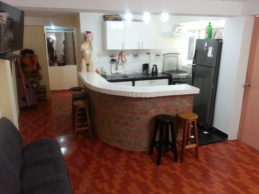 You can find several hostels and hotels in Cusco that meet your needs at affordable prices; many of these accommodations are located near the main square. Many hotels are full during peak season: June, July and August, so it is advisable to make reservations for this time in advance and during holidays and local festivals. But we recommend a homestay in a local guest family in Cusco or staying in an apartment in a residential neighborhood. That way you experience more of the city, the people and the culture by seeing the ´real Cusco´.
You can find several hostels and hotels in Cusco that meet your needs at affordable prices; many of these accommodations are located near the main square. Many hotels are full during peak season: June, July and August, so it is advisable to make reservations for this time in advance and during holidays and local festivals. But we recommend a homestay in a local guest family in Cusco or staying in an apartment in a residential neighborhood. That way you experience more of the city, the people and the culture by seeing the ´real Cusco´.
12. How is transportation in Cusco?
Transportation is cheap according to Western standards. You can always take a taxi at any time in the city. The fare is about $ 1 for shorter distances during the day (6am – 10pm) and 1.5 dollars at night (10pm – 6am). The local bus fare is approximately $ 0.25 and this takes you throughout the whole city.
13. Is it safe to walk in Cusco?
It is safe during the day if you stay in the city center, commercial zones and residential parts. Cusco is known as a relative quiet and safe city. At night it is better to take a taxi, especially if you are alone.
14. Is it easy to use internet in Cusco?
You can find internet in the Spanish school, in most accommodations and in all the touristic restaurants, coffee places and bars in the city center.
15. What exactly is the “tourist ticket”?
We get this question a lot. This is a ticket that allows you to visit the main attractions of the city and surroundings, including the Inca ruins and one of the best scenery in the Sacred Valley. It is important to bring the “tourist ticket” to go to these places in the city or to your tour the Sacred Valley. The ticket is valid for 10 days. You can buy it in the first place you visit or the public office in the city center. They have student discounts with your ISIC student card.
16. What about the Peruvian cuisine?
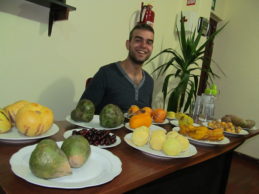 The Peruvian cuisine is considered one of the most diverse in the world and is gaining a lot of popularity in recent years. Peruvian cuisine combines the flavors of four continents. Some traditional dishes include “ceviche” (fish cooked with lemon), “Lomo saltado” (beef, fried potatoes with onions, tomatoes, cilantro and rice), “Anticuchos” (species and beef heart grilled) “Papa a la Huancaina” (boiled potatoes in cheese sauce and yellow), and many other dishes. The international cuisine is also available at tourist sites. Peruvian culinary arts are constantly evolving and it is impossible to list in full.
The Peruvian cuisine is considered one of the most diverse in the world and is gaining a lot of popularity in recent years. Peruvian cuisine combines the flavors of four continents. Some traditional dishes include “ceviche” (fish cooked with lemon), “Lomo saltado” (beef, fried potatoes with onions, tomatoes, cilantro and rice), “Anticuchos” (species and beef heart grilled) “Papa a la Huancaina” (boiled potatoes in cheese sauce and yellow), and many other dishes. The international cuisine is also available at tourist sites. Peruvian culinary arts are constantly evolving and it is impossible to list in full.
Other questions?
Of course if you can´t find the answers to the questions you are having, please feel free to ask us!
